Showing Spotlights 385 - 392 of 627 in category All (newest first):
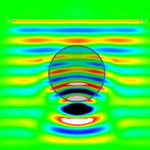 A problem with conventional photolithography techniques is that they cannot achieve the small size requirement of nanoholes and nanopillars, required for various nanofabrication applications, because of the wavelength limitation of the exposure light source. Other nanolithography techniques, such as electron-beam lithography, focused ion beam milling, and x-ray lithography, have the high resolution to form these nanoholes and nanopillars. However, these techniques are all very expensive or have too low a throughput to fabricate a large area of repetitive nanopatterns. A low cost nanosphere lithography method for patterning and generation of semiconductor nanostructures provides a potential alternative to conventional top-down fabrication techniques.
A problem with conventional photolithography techniques is that they cannot achieve the small size requirement of nanoholes and nanopillars, required for various nanofabrication applications, because of the wavelength limitation of the exposure light source. Other nanolithography techniques, such as electron-beam lithography, focused ion beam milling, and x-ray lithography, have the high resolution to form these nanoholes and nanopillars. However, these techniques are all very expensive or have too low a throughput to fabricate a large area of repetitive nanopatterns. A low cost nanosphere lithography method for patterning and generation of semiconductor nanostructures provides a potential alternative to conventional top-down fabrication techniques.
Aug 16th, 2010
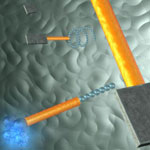 Sophisticated molecular-size motors have evolved in nature, where they are used in virtually every important biological process. Some fascinating examples in nature are DNA and RNA polymerase, rotary motors such as ATP synthase, and flagella motors. In contrast, the development of synthetic nanomotors that mimic the function of these amazing natural systems and could be used in man-made nanodevices is in its infancy. Nevertheless, scientists are making good progress in achieving cargo transport by artificial nanomachines although often these advances are handicapped by several drawbacks. Researchers in Germany have now demonstrated the directed loading and transport of microobjects by high propulsion powered tubular microbots driven by a microbubble propulsion mechanism.
Sophisticated molecular-size motors have evolved in nature, where they are used in virtually every important biological process. Some fascinating examples in nature are DNA and RNA polymerase, rotary motors such as ATP synthase, and flagella motors. In contrast, the development of synthetic nanomotors that mimic the function of these amazing natural systems and could be used in man-made nanodevices is in its infancy. Nevertheless, scientists are making good progress in achieving cargo transport by artificial nanomachines although often these advances are handicapped by several drawbacks. Researchers in Germany have now demonstrated the directed loading and transport of microobjects by high propulsion powered tubular microbots driven by a microbubble propulsion mechanism.
Aug 3rd, 2010
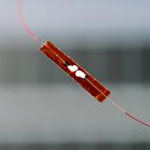 Biomechanical energy is one of the main energy components in biological systems. Developing an effective technique that can convert biomechanical energy into electricity is important for the future of in vivo implantable biosensors and other nanomedical devices. Researchers have already shown the conversion of biomechanical energy into electricity by a muscle-movement-driven nanogenerator to harvest mechanical energy from body movement under in vitro conditions. In a first demonstration of using nanotechnology to convert tiny physical motion into electricity in an in vivo environment, the same team has now reported the implanting of a nanogenerator in a live rat to harvest energy generated by its breath and heartbeat.
Biomechanical energy is one of the main energy components in biological systems. Developing an effective technique that can convert biomechanical energy into electricity is important for the future of in vivo implantable biosensors and other nanomedical devices. Researchers have already shown the conversion of biomechanical energy into electricity by a muscle-movement-driven nanogenerator to harvest mechanical energy from body movement under in vitro conditions. In a first demonstration of using nanotechnology to convert tiny physical motion into electricity in an in vivo environment, the same team has now reported the implanting of a nanogenerator in a live rat to harvest energy generated by its breath and heartbeat.
Jul 9th, 2010
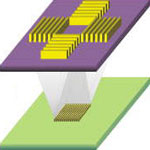 After achieving the 45-nm process, today's semiconductor industry is nearing the 20-nm process and looking for techniques that would enable sub-22-nm-half-pitch line patterns. Following the continuous increase in exposure tool numerical aperture, researchers are pursuing reductions in exposure wavelengths. This effort had them look at extreme ultraviolet (EUV: 13.4 nm in wavelength) as an exposure light source. Unlike the numerical aperture engineering, change of a light source to EUV demands development of its related components, such as photoresist and optics. Until a reliable solution for EUV lithography is developed, EUV interference lithography (EUVIL) would not solely advance the lithographic technology but would also help to optimize photoresist materials for EUV.
After achieving the 45-nm process, today's semiconductor industry is nearing the 20-nm process and looking for techniques that would enable sub-22-nm-half-pitch line patterns. Following the continuous increase in exposure tool numerical aperture, researchers are pursuing reductions in exposure wavelengths. This effort had them look at extreme ultraviolet (EUV: 13.4 nm in wavelength) as an exposure light source. Unlike the numerical aperture engineering, change of a light source to EUV demands development of its related components, such as photoresist and optics. Until a reliable solution for EUV lithography is developed, EUV interference lithography (EUVIL) would not solely advance the lithographic technology but would also help to optimize photoresist materials for EUV.
Jul 8th, 2010
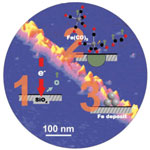 The manufacture of certain types of nanostructures - nanotubes, graphene, nanoparticles, etc. - has already entered industrial-scale mass production. However, the controlled fabrication of nanostructures with arbitrary shape and defined chemical composition is still a major challenge in nanotechnology applications. It appears that electron beams from electron microscopes (EM) - nowadays routinely focused down to the nanometer regime - are ideal candidates for versatile tools for nanotechnology. However, their usage is mostly restricted by the conditions in the corresponding electron microscopes, since most EMs are housed in high vacuum chambers the unintended electron-beam-induced deposition of residual gases is a problem, as well as the maintenance of well defined sample conditions. Researchers in Germany have now presented a novel way to use a highly focused electron beam to lithographically fabricate clean iron nanostructures. This new technique expands the application field for focused electron beams in nanotechnology.
The manufacture of certain types of nanostructures - nanotubes, graphene, nanoparticles, etc. - has already entered industrial-scale mass production. However, the controlled fabrication of nanostructures with arbitrary shape and defined chemical composition is still a major challenge in nanotechnology applications. It appears that electron beams from electron microscopes (EM) - nowadays routinely focused down to the nanometer regime - are ideal candidates for versatile tools for nanotechnology. However, their usage is mostly restricted by the conditions in the corresponding electron microscopes, since most EMs are housed in high vacuum chambers the unintended electron-beam-induced deposition of residual gases is a problem, as well as the maintenance of well defined sample conditions. Researchers in Germany have now presented a novel way to use a highly focused electron beam to lithographically fabricate clean iron nanostructures. This new technique expands the application field for focused electron beams in nanotechnology.
Jun 28th, 2010
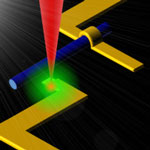 Current fabrication technologies for nanoscale devices include deep-UV or electron-beam (e-beam) lithography. Both of these techniques involve successive deposition of metal or insulating layer and a resist layer, which is patterned using a UV source or a scanning electron beam. The process needs to be repeated for each layer of the architecture while the sample is taken out of the high vacuum chamber. Thus, multilayer lithography processes seriously compromise throughput and cost. In addition, the resolution is limited in the sub-10 nm regime. Researchers at the Institute of Bioengineering and Nanotechnology (IBN) in Singapore have now successfully demonstrated, for the first time, a lithography-free, direct-write technique for fabricating discrete field-effect transistors, as well as digital logic gates on a single nanowire.
Current fabrication technologies for nanoscale devices include deep-UV or electron-beam (e-beam) lithography. Both of these techniques involve successive deposition of metal or insulating layer and a resist layer, which is patterned using a UV source or a scanning electron beam. The process needs to be repeated for each layer of the architecture while the sample is taken out of the high vacuum chamber. Thus, multilayer lithography processes seriously compromise throughput and cost. In addition, the resolution is limited in the sub-10 nm regime. Researchers at the Institute of Bioengineering and Nanotechnology (IBN) in Singapore have now successfully demonstrated, for the first time, a lithography-free, direct-write technique for fabricating discrete field-effect transistors, as well as digital logic gates on a single nanowire.
Jun 16th, 2010
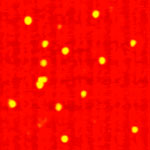 Nanoparticle chirality has attracted much attention among nanoscientists, and the application of chiral nanoparticles in chemistry, biology and medicine is of great importance for the development of new molecular nanosystems. In chemistry, chirality usually refers to molecules. Discovering efficient methods to produce, control and identify enantiomerically pure chiral compounds is critical for the further development of pharmaceuticals, agrochemicals, fragrances and food additives. An important example in the area of nanomaterials is the synthesis of metallic nanoparticles with controlled size, shape, composition, and morphology for catalytic applications.
Nanoparticle chirality has attracted much attention among nanoscientists, and the application of chiral nanoparticles in chemistry, biology and medicine is of great importance for the development of new molecular nanosystems. In chemistry, chirality usually refers to molecules. Discovering efficient methods to produce, control and identify enantiomerically pure chiral compounds is critical for the further development of pharmaceuticals, agrochemicals, fragrances and food additives. An important example in the area of nanomaterials is the synthesis of metallic nanoparticles with controlled size, shape, composition, and morphology for catalytic applications.
Jun 10th, 2010
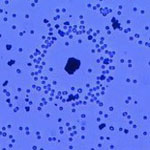 For nanotechnology researchers, movement at the nanoscale is a challenging problem and there is much to be learned from nature's motor systems. There are various approaches to creating self-propelled micro- and nanosized motors and one promising approach rests on catalytic conversion of chemical to mechanical energy - a process that is ubiquitous in biology, powering such important and diverse processes as cell division, skeletal muscle movement, protein synthesis, and transport of cargo within cells. Self-propelled motion of synthetic materials can be useful in applications such as bottom-up assembly of structures, pattern formation, drug delivery at specific locations, etc. Researchers have now presented a novel and versatile light-driven catalytic micromotor system, which is the cleanest and simplest of its kind.
For nanotechnology researchers, movement at the nanoscale is a challenging problem and there is much to be learned from nature's motor systems. There are various approaches to creating self-propelled micro- and nanosized motors and one promising approach rests on catalytic conversion of chemical to mechanical energy - a process that is ubiquitous in biology, powering such important and diverse processes as cell division, skeletal muscle movement, protein synthesis, and transport of cargo within cells. Self-propelled motion of synthetic materials can be useful in applications such as bottom-up assembly of structures, pattern formation, drug delivery at specific locations, etc. Researchers have now presented a novel and versatile light-driven catalytic micromotor system, which is the cleanest and simplest of its kind.
Jun 2nd, 2010
 A problem with conventional photolithography techniques is that they cannot achieve the small size requirement of nanoholes and nanopillars, required for various nanofabrication applications, because of the wavelength limitation of the exposure light source. Other nanolithography techniques, such as electron-beam lithography, focused ion beam milling, and x-ray lithography, have the high resolution to form these nanoholes and nanopillars. However, these techniques are all very expensive or have too low a throughput to fabricate a large area of repetitive nanopatterns. A low cost nanosphere lithography method for patterning and generation of semiconductor nanostructures provides a potential alternative to conventional top-down fabrication techniques.
A problem with conventional photolithography techniques is that they cannot achieve the small size requirement of nanoholes and nanopillars, required for various nanofabrication applications, because of the wavelength limitation of the exposure light source. Other nanolithography techniques, such as electron-beam lithography, focused ion beam milling, and x-ray lithography, have the high resolution to form these nanoholes and nanopillars. However, these techniques are all very expensive or have too low a throughput to fabricate a large area of repetitive nanopatterns. A low cost nanosphere lithography method for patterning and generation of semiconductor nanostructures provides a potential alternative to conventional top-down fabrication techniques.
 Subscribe to our Nanotechnology Spotlight feed
Subscribe to our Nanotechnology Spotlight feed





